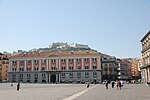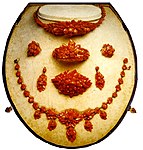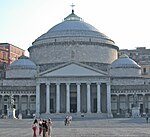Royal Palace of Naples
1616 establishments in Italy1616 establishments in the Kingdom of SicilyBaroque palaces in ItalyHouses completed in 1616Museums in Naples ... and 4 more
Palaces in NaplesRoyal Palace of NaplesRoyal residences in the Kingdom of NaplesTourist attractions in Naples

The Royal Palace of Naples (Italian: Palazzo Reale di Napoli, Neapolitan: Palazzo Riale ‘e Napule) is a palace, museum, and historical tourist destination located in central Naples, southern Italy. It was one of the four residences near Naples used by the House of Bourbon during their rule of the Kingdom of Naples (1735–1816) and later the Kingdom of the Two Sicilies (1816-1861). The others were the palaces of Caserta, Capodimonte overlooking Naples and Portici on the slopes of Vesuvius.
Excerpt from the Wikipedia article Royal Palace of Naples (License: CC BY-SA 3.0, Authors, Images).Royal Palace of Naples
Piazza del Plebiscito, Naples San Ferdinando
Geographical coordinates (GPS) Address Phone number Website External links Nearby Places Show on map
Geographical coordinates (GPS)
| Latitude | Longitude |
|---|---|
| N 40.8362 ° | E 14.2496 ° |
Address
Palazzo Reale
Piazza del Plebiscito
80132 Naples, San Ferdinando
Campania, Italy
Open on Google Maps











